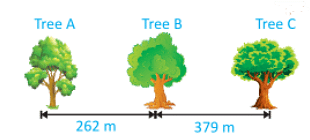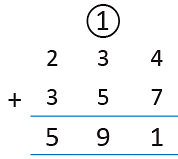Olympiad Test Level 1: Computing Operations - Class 3 MCQ
20 Questions MCQ Test Mathematics Olympiad for Class 3 - Olympiad Test Level 1: Computing Operations
Find the missing number 165 + 52 + 10 = 52 + ? + 10
If A = 25 + 7,825 and B = 4,525 + 75, find the difference between A and B.
| 1 Crore+ students have signed up on EduRev. Have you? Download the App |
Look at the two number sentences shown below :
8 × _ = 40, 40 ÷ 8 = _
Which number goes in both blank spaces to make each number sentence true ?
The sum of 1,727 and 6,475 is ________.
112 is divisible by which one of the following numbers ?
How many numbers given in the figure come in the table of 7 ?

Which of the following represents the additive identity property of 0 ?
Difference between the two numbers is 400. If one of the numbers is 300 greater than 600, find the other number.
Find the missing number to fill in the blank box
111 + 9 = ⌧+ 7
Find the value of A, B and C respectively.

In an examination hall, 500 chairs were arranged equally in 10 rows. How many chairs are there in each row ?
Add the 6,523 + 2,364. Which one of the following numbers is in the hundreds place of the resulting addition ?
When we divide 0 by 3, we get _______.
I am the smallest odd number that comes after 4,386. Add 632 to me. What number am I now ?
Sandhya cycled from Tree B to Tree C. She then cycled from Tree C to Tree A. How far did she cycle altogether ?

|
42 videos|35 docs|56 tests
|
|
42 videos|35 docs|56 tests
|


















